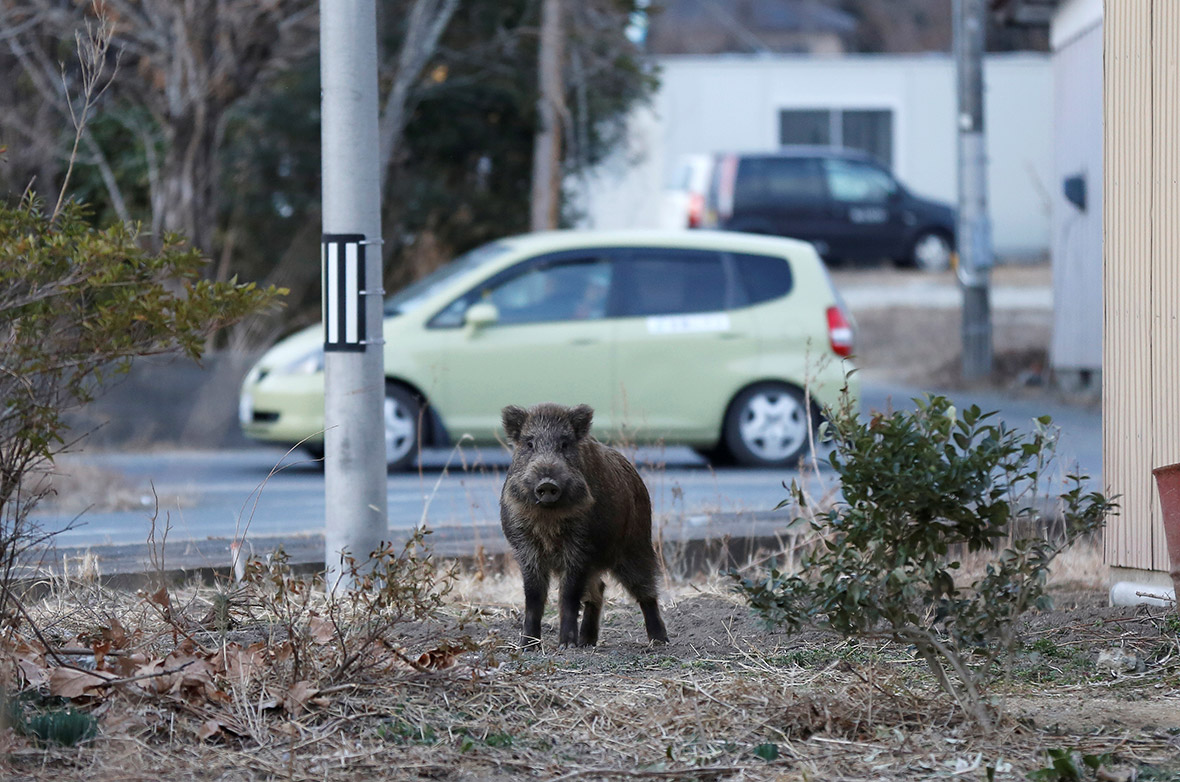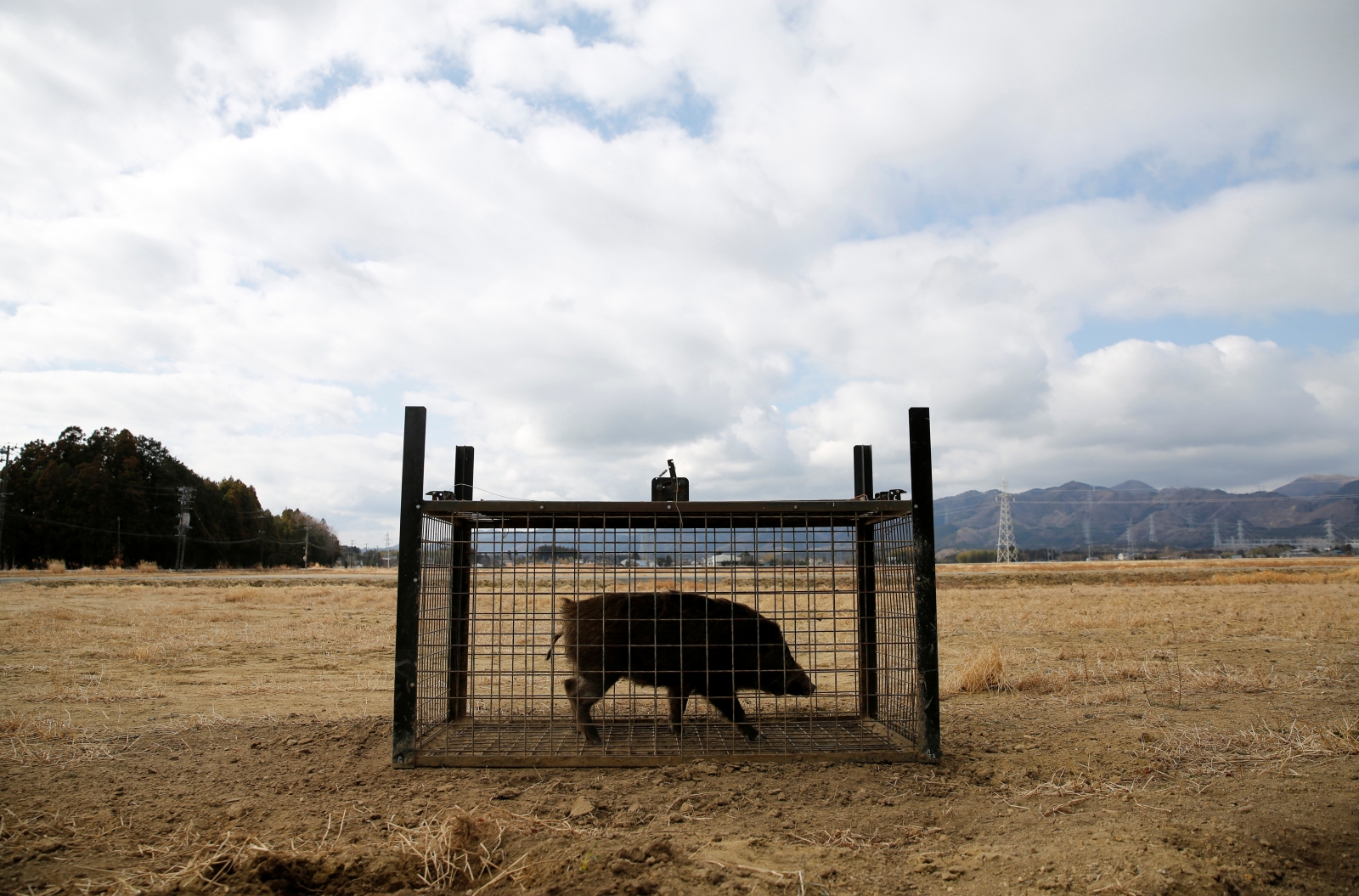In pictures: 'Radioactive' wild boars roam the empty streets in Fukushima nuclear exclusion zone
The animals descended from the mountains and invaded residential areas after people were forced to flee after the March 2011 earthquake, tsunami and nuclear catastrophe.
There are so many wild boars roaming the streets of deserted towns inside the Fukushima nuclear exclusion zone that hunters have been hired to cull them.


Just like the Chernobyl exclusion zone, populations of wild animals have boomed in the absence of humans. The animals, which usually live in the mountains and avoid residential areas, took over after people were forced to flee their homes following the March 2011 earthquake, tsunami and nuclear catastrophe.
Namie and Tomioka, two smalls towns located within the 20-kilometre exclusion zone around the nuclear plant, are set to reopen partially to welcome back nuclear refugees from 31 March and 1 April respectively. To prepare for the return of humans, local authorities have hired a group of hunters to curb the growing population of the wild animals.
"After people left, their (the wild boars') ecosystem changed. They began coming down from the mountains and now they're not going back. They found a place that's comfortable – there's plenty of food, and no one will come after them. This is their new home now, and this is where they have children," said hunter Shoichiro Sakamoto.


Before the disaster, Sakamoto and his team caught about 50 wild boars a year, mostly in rural mountainous areas. From last April to this February, they have caught about 300 in Tomioka alone. Twice a week, Sakamoto and his team set over 30 cage traps in Tomioka. The hunters use pellet guns to kill the wild boars and then load them onto a truck and take them to a town-run facility where the bodies are decomposed by bacteria.
The boars have been labelled unfit for human consumption as their meat has been found to be highly irradiated. This is because the animals have been eating radiation-contaminated plants from around the disaster site. Fukushima prefecture research showed that out of a sample size of 208 captured wild boars from 2016 to early 2017, about 106 were detected to contain a caesium level surpassing the radiation safety standard of 100 becquerel per kg mandated by the Japanese government. Some boars had a caesium reading of up to 13,000 Bq/kg.






Six years ago – on 11 March 2011 – a magnitude-nine earthquake shook the country's northeast. The 10-metre (33-foot) tsunami it spawned smashed into the power plant on the Fukushima coastline, triggering a meltdown and forcing nearby towns to evacuate. The disaster killed more than 19,000 people across Japan and caused an estimated 16.9 trillion yen (£121bn) in damages. More than 160,000 people were evacuated from towns around the nuclear plant. Around 10 percent still live in temporary housing across Fukushima prefecture. Most have settled outside their hometowns and have begun new lives.
Three weeks before the partial lift of a 2011 evacuation order, little feels normal in Tomioka and Namie. Many homes damaged in the disaster have been abandoned. Piles of bags stuffed with radioactive waste are a common sight around the towns.



The average radiation level in Tomioka town is 0.437 microsievert per hour, a drop from 1.287 microsievert per hour in 2014. Five towns in Fukushima have partially reopened for residents to return since the disaster so far. Tokyo has pledged 26.3 trillion yen over five years to rebuild the disaster area and will allocate another six trillion for the next five years.
© Copyright IBTimes 2025. All rights reserved.






















